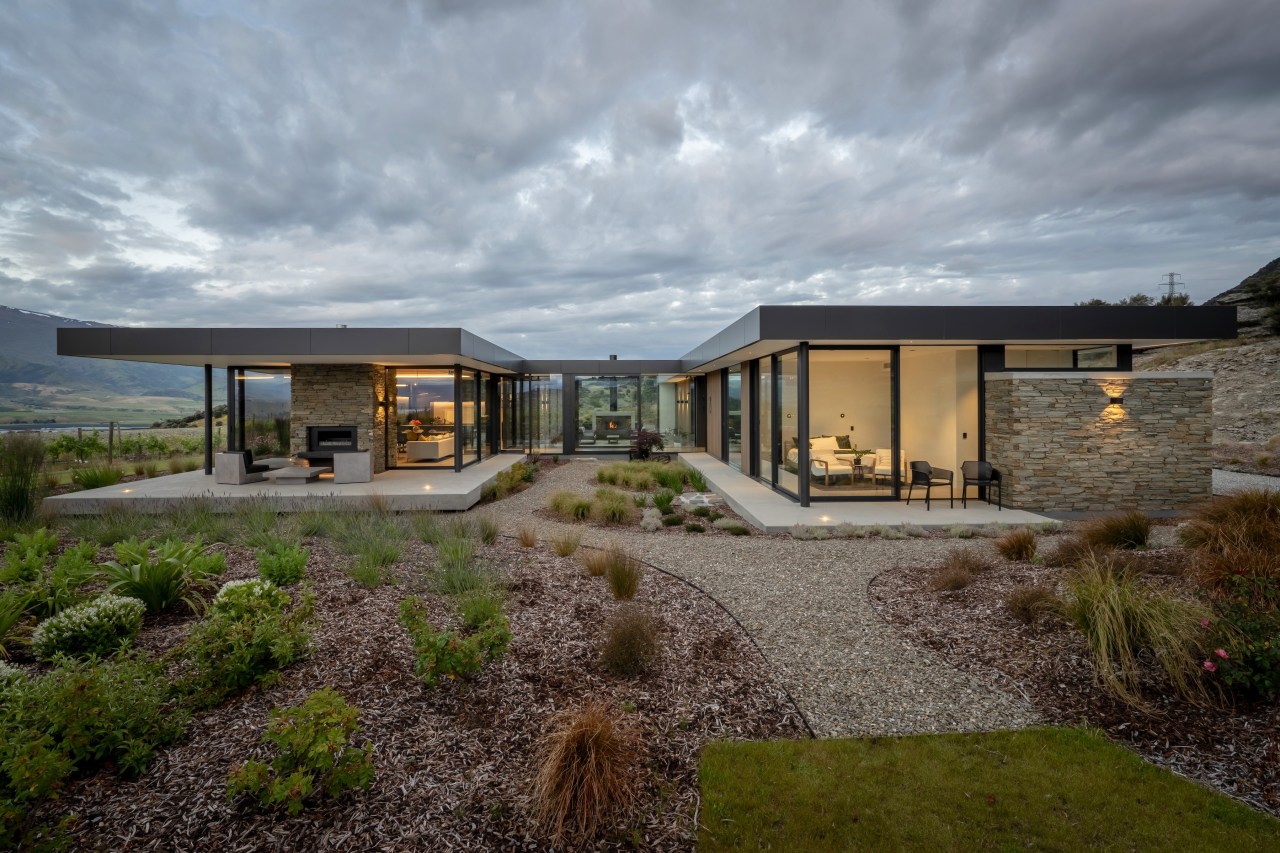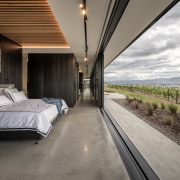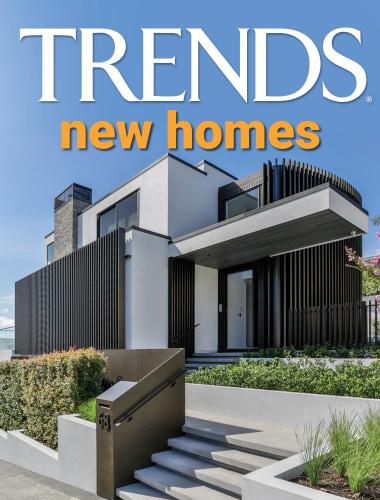A strong home in a strong land
A floor plane and a roof plane, with fully glazed walls between – this contemporary high-end two-pavilion home is all about engaging with its mountain setting
Designed by Barry Condon, Condon Scott Architects
From the architects:
With the site nestled amongst vineyards in the foothills of the Dunstan mountain range, the owners were seeking to create a permanent home that capitalised on the impressive view westwards to the Pisa Range and below to Lake Dunstan.
They were looking for a design that could bring all day sunlight into living spaces with a clean and uncluttered feel, while capturing the huge surrounding panorama.
This brief for a minimal form was distilled down to a floor plane and a roof plane, with fully glazed walls between.
The idea was to create an open pavilion that appeared to almost float over the rocky site, allowing occupants to look up and down the valley in its entirety.
The floating form was achieved by creating a negative space around the perimeter of the ground floor plane, cantilevering the oversized concrete floor slab.
This reflects the roof form above, sitting at 3m high to ensure the mountain range is not cropped from view.
Internally, there are a series of pods containing the services.
These pods are set back from the glazing line creating a corridor.
Windows and internal doors retract into the walls, connecting the interior spaces to the vines and beyond.
On such an exposed site, extreme wind is a given.
To address this, the layout of the single storey home is an H shaped configuration, creating an arrangement of sheltered terraces and courtyards for outdoor living.
A rigorous design approach was taken to ensure the home performs well in the variable climate.
Passive solar design was a priority.
The roof plane is cantilevered 1m beyond the ground floor to deflect the sun’s intensity during summer, while allowing sunlight into the home during winter, where heat is absorbed by the building’s thermal mass.
Natural, locally sourced, cladding and construction materials that perform well in Otago and fit the minimal brief have been used.
The exterior walls are clad in vertical light-stained cedar and schist.
Use of this locally sourced stone ties the building to the site’s adjacent rocky schist gully and the region’s pioneering history.
Internally, polished concrete floors and dark-stained timber and veneer continue the minimal palette.
Timber batten ceilings create visual interest and improve acoustic performance.
To fast-track liveability for the owners, the project was implemented in stages.
The first pavilion built includes the living spaces and master bedroom.
The second stage, linked by a glazed hallway, contains the guest bedrooms, laundry and wine cellar and was completed the following year in 2022.
Despite being based overseas, the owners played an active role during the construction and were involved in site meetings where possible.
Hurdles such as Covid 19, lockdowns, isolating staff and supply chain issues were all overcome, with the clients placing a huge amount of trust in the architects and their build team.
Credit list
Architect
Kitchen designer
Interior designer
Roof
Flooring
Paint
Fireplace
Awards
Builder
Kitchen manufacturer
Cladding
Bathroom tiles
General heating
Feature lighting
Home kitchen bathroom commercial design
Personality plus
Diving into nature
Classic looks, contemporary efficiency


















